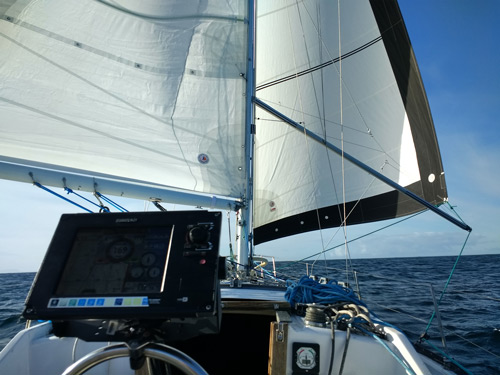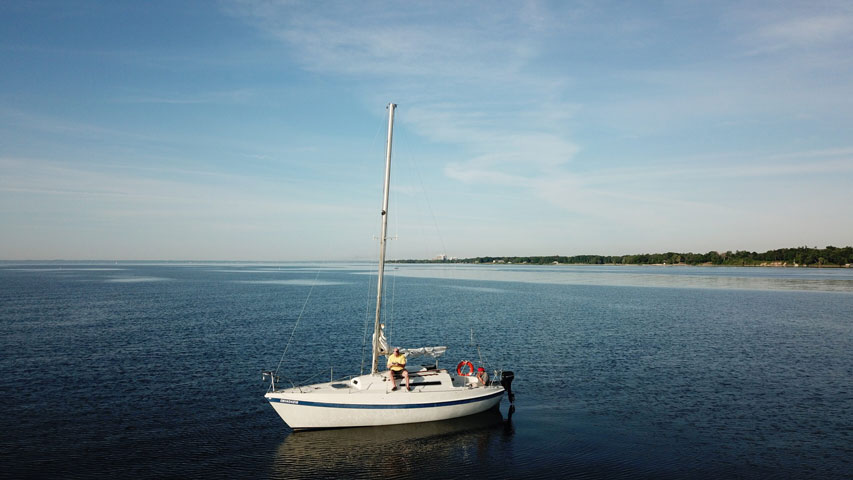Jibs and Genoas are triangular sails which are affixed to a stay in front of the mast. Typically they run from the head of the foremast to the bowsprit. Jibs and genoa’s are used in tandem with a mainsail to stabilize the vessel and are usually measured by their Luff Perpendicular percentage, that is, how much area within the fore-triangle they use.
Jibs are typically 100% to 115% LP and are generally used in areas with heavier winds. The smaller area of a jib allows it to be able to perform more efficiently in greater wind speed without the need to furl away sail shape. Typically a jib will be no greater than 115% of the fore-triangle dimensions.
A genoa is similar to a jib but is larger and reaches past the mast. It will typically overlap a mainsail to some extent. Occasionally, some genoas are so large that if you look at the boat from the side the majority of the mainsail is covered. These are used in lighter air when the most sail area is needed to increase performance.
Technically a foresail that does not overlap the mast is considered a jib, but an overlapping sail is a Genoa. Very likely you will hear the terms used interchangeably. In an effort to standardize which size sail belongs in which category, we have broken down each as follows:
#1 Genoa is 150%
#2 Genoa is 135%
#3 Jib is 115%
#4 Jib is 95%
Smaller jibs are much easier to handle and are especially popular if you are short on crew, besides being less expensive. Non-overlapping sails may also have a longer lifespan since their leeches won’t be dragged across your shrouds, spreaders, and mast. Another benefit is that the weight is significantly lighter. This has two values. First, you will be able to handle them easier both to change and to trim. Secondly, the lower weight means less heeling and pitching. Cross Cut and Tri-Radial designs are available for all sizes.
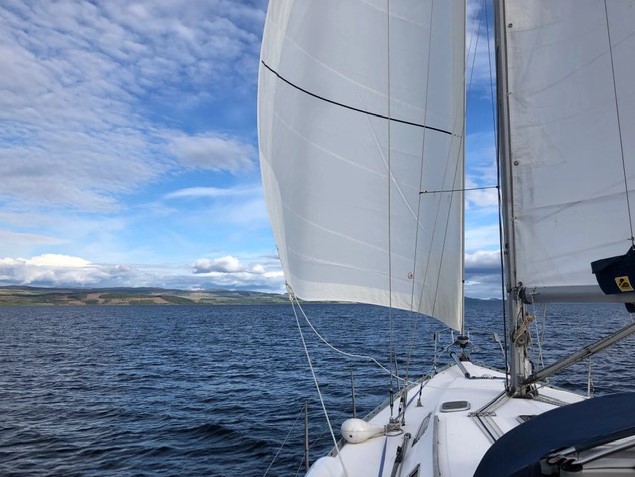
135% Furling Headsail for a Dufour 38
However, it is important to note that various cloth weights may be used on jibs and genoas as the sail design based on the boat and sailing conditions will determine what weight will be needed.
Isn’t It Better To Have More Sail Area And Furl Away Whats Not Needed?
Older boats were significantly heavier with longer keels, so it was necessary to fly as much sail as possible to power up. With lighter craft, including lighter masts and rigging, the mast height can be taller without affecting the righting moment. Therefore, a jib that overlaps around 115% becomes quite efficient, resulting in less reliance on the additional overlap. Furthermore, furling away sail shape from a larger genoa for heavy air usage causes uneven stretching in the Dacron over time as well as reducing the efficiency of the sail shape.
A great way to determine which size headsail you need is to get involved with a local club, search on a forum, or have a conversation with a sail consultant. From the massive amount of information available you should be able to see what owners of the same boat have gone with.
It is important to note that while most owners of the same boat might recommend the same sail, the geographic location and experience level of the captain will be the most important factor in which sail to purchase. A sail made for a Catalina 27 in Seattle will be completely different than a sail made for a Catalina 27 sailing through the Bahamas.
Sail Inventory And The Benefit of Multiple Sails
Most sailors dislike changing sails, but smart sailors know that it is foolish to go out with only one working headsail.
If you already have a larger genoa you may want to consider a smaller headsail with a luff perpendicular of around 115% or less. You can keep your genoa in reserve and use the smaller sail with the increasing breeze. Often changing out your active sail inventory will only need to be done a few times a year, when the conditions demand it. You can learn more about storing your other sails and how to prevent UV damage in our prior posts.
Not every boat needs to have every possible headsail in it’s inventory. One or two carefully designed sails will do more than enough to give your boat the variety needed for the various conditions and future sailing plans you will face. The bottom line here is that you won’t need to change them as often.
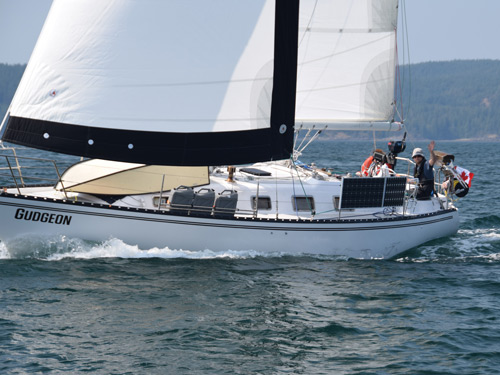
135% Furling Headsail on a Hunter 36
Code Zeros
If you think you might need a little more power in light conditions, a Code Zero might be what you are looking for. Crossed between a larger genoa and spinnaker, these sails are optimal for sailing in lighter conditions close to the wind. An torque line is a solid line built through the luff of the Code Zero and rotates when a furling unit is turned making it easier to set and douse.
If you are looking for better downwind performance, read more about symmetrical spinnakers, asymmetrical spinnakers, and code zero sails.
Wing on Wing
Sailing wing on wing is ideal for sailing on a dead run downwind when you notice a loss of power caused by your mainsail stealing the air from your headsail. To do this set the main and headsail to opposite sides but keep an eye out for accidental jibes.
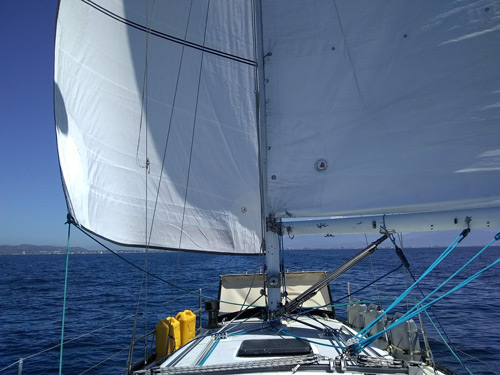
Wing-On-Wing: Mainsail and 135% Furling Headsail on a Hunter 36
Performance
In addition to improvements on the sailboats themselves, modern technology has allowed for the developement a wide variety of fabrics and design tools to improve the performance of sails. This adaptability will give you a better range for each type of sail. Especially one which is custom made for your boat, location, and experience. Correctly trimming your headsail will help to improve its performance.
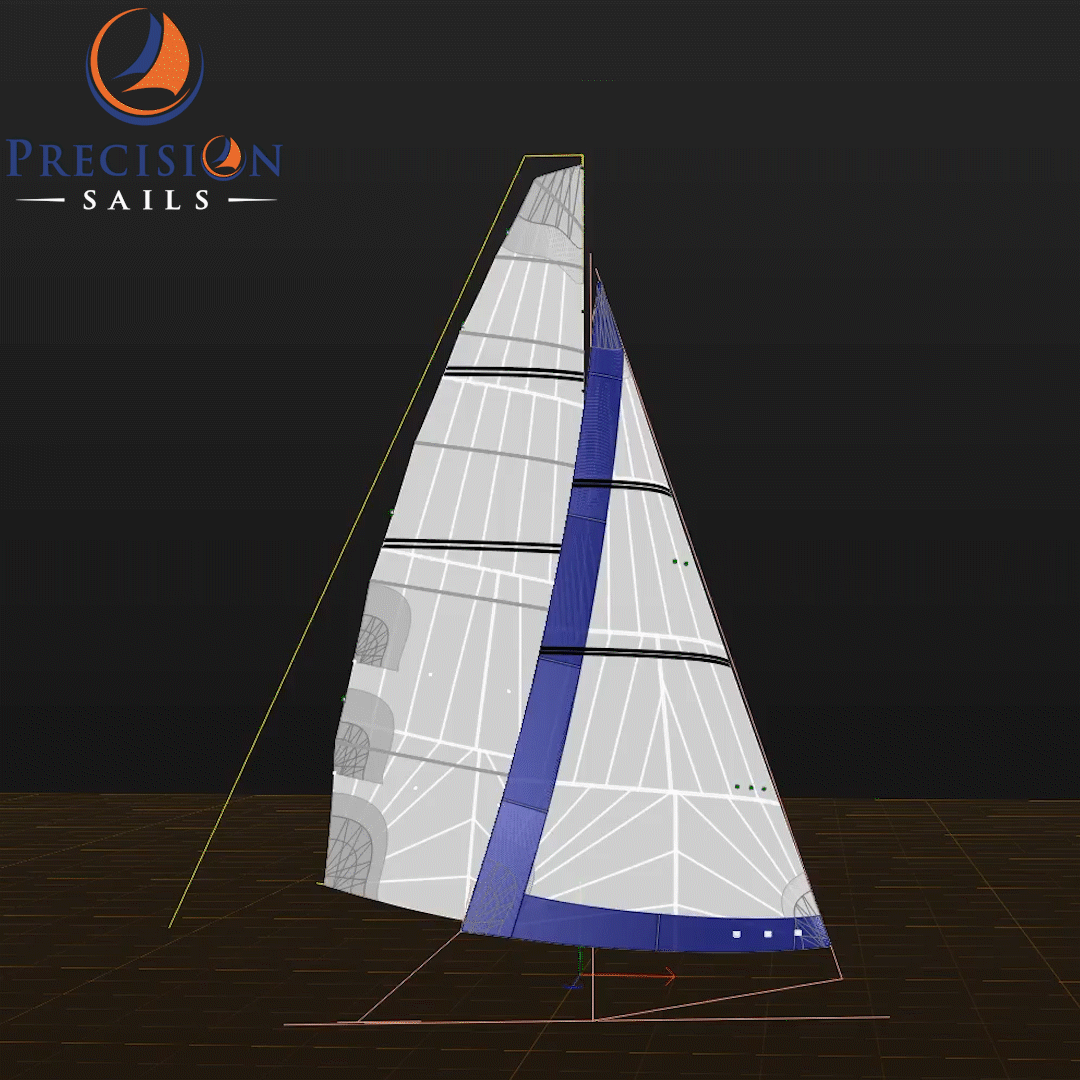
Seaward 25 135% Furling Headsail and Mainsail Design
